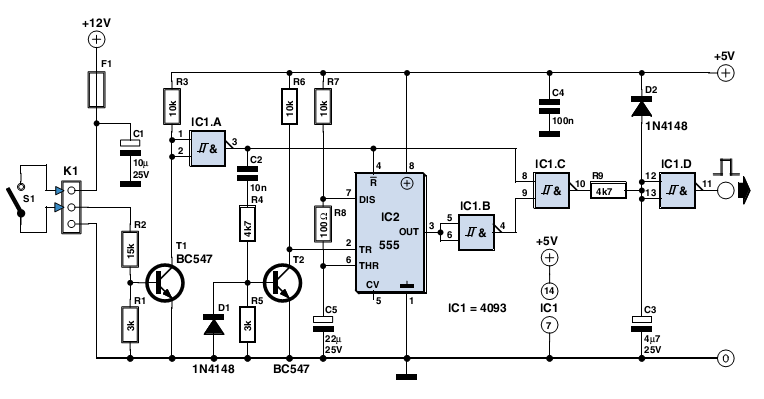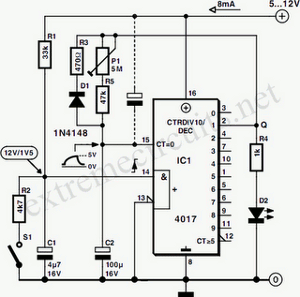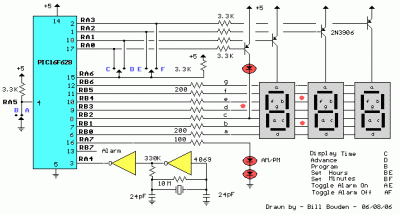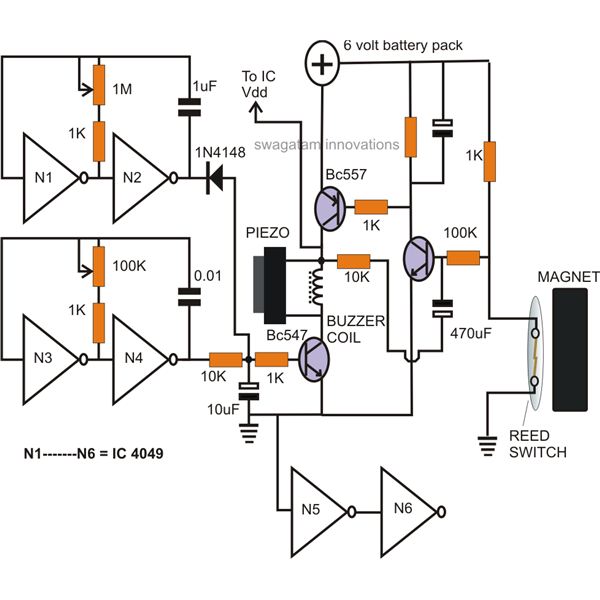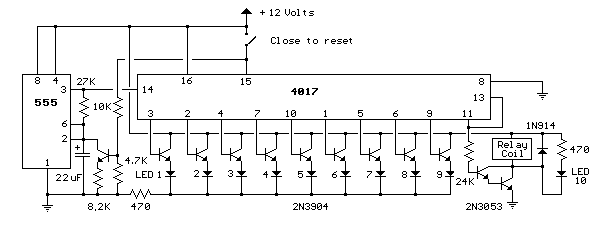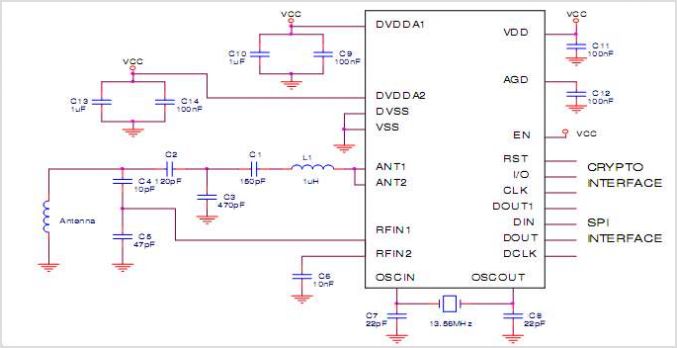
10 SEC SCS TIMER
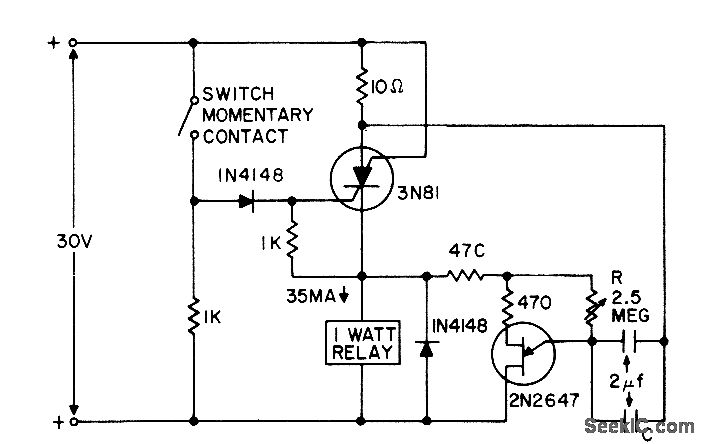
A switch applies a positive pulse to the gate of a silicon-controlled switch (SCS), activating it and supplying power to the relay load and UJT timing circuit. At the end of the timing interval, determined by the resistor-capacitor (R-C) network, the timer delivers a negative pulse to the anode to turn off the SCS.
The circuit described utilizes a silicon-controlled switch (SCS) as a key component for controlling power to a relay load and a unijunction transistor (UJT) timing circuit. The operation begins with the activation of the switch, which sends a positive voltage pulse to the gate of the SCS. This pulse is crucial as it triggers the SCS into its conductive state, allowing current to flow through the relay load. The relay load can be any device that requires switching on, such as a motor or a lamp.
The timing aspect of this circuit is governed by an R-C timing circuit, which determines how long the SCS remains in the on state. The resistor (R) and capacitor (C) are configured in such a way that they create a time delay, which is essential for controlling the duration of the pulse sent to the SCS. When the capacitor charges to a certain voltage threshold, the UJT will trigger, and this action will initiate the timing sequence.
Once the predetermined timing interval has elapsed, the UJT timing circuit generates a negative pulse. This pulse is directed to the anode of the SCS, effectively turning it off. The transition from the on state to the off state is critical for ensuring that the relay load is deactivated after the desired operation is completed.
This circuit is particularly useful in applications where precise timing control is necessary, such as in automated systems, timers, and other electronic control applications. The simplicity of the R-C timing circuit combined with the robust switching capability of the SCS makes this design effective for various electronic control tasks.Switch applies positive pulse to gate of scs, triggering it on and thereby supplying power to relay load and ujt timing circuit. At end of timing interval, determined by R-C, timer feeds negative pulse to anode to turn off scs. -"Transistor Manual, " Seventh Edition, General Electric Co. , 1964, p 435. 🔗 External reference
The circuit described utilizes a silicon-controlled switch (SCS) as a key component for controlling power to a relay load and a unijunction transistor (UJT) timing circuit. The operation begins with the activation of the switch, which sends a positive voltage pulse to the gate of the SCS. This pulse is crucial as it triggers the SCS into its conductive state, allowing current to flow through the relay load. The relay load can be any device that requires switching on, such as a motor or a lamp.
The timing aspect of this circuit is governed by an R-C timing circuit, which determines how long the SCS remains in the on state. The resistor (R) and capacitor (C) are configured in such a way that they create a time delay, which is essential for controlling the duration of the pulse sent to the SCS. When the capacitor charges to a certain voltage threshold, the UJT will trigger, and this action will initiate the timing sequence.
Once the predetermined timing interval has elapsed, the UJT timing circuit generates a negative pulse. This pulse is directed to the anode of the SCS, effectively turning it off. The transition from the on state to the off state is critical for ensuring that the relay load is deactivated after the desired operation is completed.
This circuit is particularly useful in applications where precise timing control is necessary, such as in automated systems, timers, and other electronic control applications. The simplicity of the R-C timing circuit combined with the robust switching capability of the SCS makes this design effective for various electronic control tasks.Switch applies positive pulse to gate of scs, triggering it on and thereby supplying power to relay load and ujt timing circuit. At end of timing interval, determined by R-C, timer feeds negative pulse to anode to turn off scs. -"Transistor Manual, " Seventh Edition, General Electric Co. , 1964, p 435. 🔗 External reference
